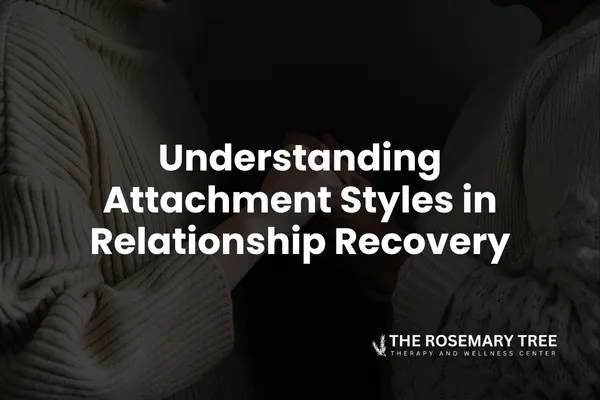
Understanding Attachment Styles in Relationship Recovery
Why Attachment Work Matters After Betrayal
When a relationship has been shaken by betrayal or secrecy, the foundation of trust breaks, but so does the invisible thread that once made each person feel safe and connected.
This is why couples often find themselves trapped in painful patterns after discovery: one person reaching out anxiously, the other pulling away. These reactions are not personal failures; they are attachment responses.
Understanding attachment helps couples see that beneath anger or silence, both people are simply trying to feel safe again.
What Are Attachment Styles?
Attachment styles are patterns we develop early in life for how we connect, seek comfort, and respond to emotional closeness.
There are four main types:
Secure Attachment
Feels comfortable with closeness and trust. Communicates needs openly and believes the relationship can withstand conflict.Anxious Attachment
Craves closeness but fears rejection or abandonment. May seek reassurance frequently or interpret distance as danger.Avoidant Attachment
Values independence and control. May pull away during conflict or minimize emotions to avoid feeling vulnerable.Disorganized Attachment
A mix of anxious and avoidant traits, often seen in those who experienced trauma. Can swing between seeking closeness and fearing it.
None of these are “bad.” They are learned strategies for safety that simply need to be understood and reshaped within the relationship.
How Betrayal Impacts Attachment
Betrayal reactivates old attachment wounds. Even those who were once securely attached may suddenly feel unsafe and unsure how to connect.
For the betrayed partner, betrayal often triggers anxious attachment, a desperate need for reassurance, constant checking, or fear of being left again.
For the partner who caused harm, guilt and shame can lead to avoidant behaviors, withdrawal, emotional shutdown, or self-isolation.
Both are rooted in fear. The anxious partner fears abandonment. The avoidant partner fears rejection. The result is a painful cycle where one reaches out while the other retreats.
Breaking the Cycle
Healing begins when both partners learn to recognize these attachment responses for what they are: signs of fear, not lack of love.
You can begin by:
Naming the pattern without blame (“I notice I chase when I feel you pull away.”)
Pausing during conflict to calm your body before reacting
Sharing needs clearly instead of assuming your partner already knows
Practicing small, safe connections: gentle touch, kind words, eye contact, or shared time
These moments rebuild a sense of safety that makes connection possible again.
Why Awareness Isn’t Enough
Simply knowing your attachment style is helpful, but it is only the beginning. Changing deeply ingrained patterns requires guided practice, patience, and consistent safety.
Our Accelerated Deep-Work Therapy Intensives give couples the time and space to explore these patterns in depth. With multiple hours of dedicated focus, you can begin to:
Identify how each person’s attachment style shows up in real time
Practice new communication habits that build security
Learn grounding tools to regulate emotions during conflict
Create a shared language for expressing needs without fear
These extended sessions allow real progress, not just insight.
Moving Toward Secure Attachment
Secure attachment is not about being perfect, it is about being consistent, responsive, and honest. It is built slowly, through moments of stability and compassion.
As couples begin to repair through attachment work, they often notice:
Arguments end with understanding instead of escalation
Emotional connection begins to return
Vulnerability feels less threatening
Trust begins to grow naturally
Healing through attachment means learning that safety can be rebuilt, not because the past disappears, but because the present becomes steady enough to hold it.
Final Thoughts
Your attachment style does not define your relationship’s future. It simply explains how you learned to survive when you felt unsafe. With guidance, compassion, and time, those patterns can shift toward connection.
If you are ready to begin rebuilding safety and understanding your attachment patterns together, we would love to help. You can reach out to us here, and our team will connect with you to talk about what this process could look like. There is no pressure, only a space to begin reconnecting with care.
